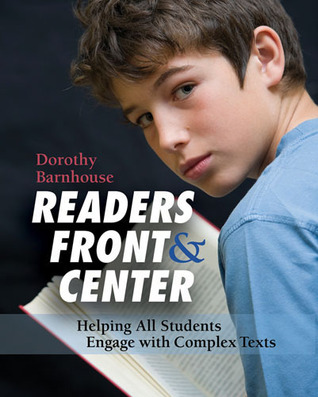Margaret has today's roundup at Reflections on the Teche. See you next week here at A Year of Reading for the Poetry Friday Roundup! Until then, I'll wish you "tight lines!"
I have been involved with Casting for Recovery since 2005, when I was a participant. I have written about it many times here on the blog. Use the search box ("Casting for Recovery") to find these posts, if the spirit moves you. And if you want, you can even "like" the Ohio CFR Facebook Page!
One of my favorite fishing memories happened in Maine when I treated myself to a trip to L.L. Bean's Women's Fly Fishing School. After I completed the classes, I fished on several rivers in Maine before returning home. One was much like the picture above, and although I wasn't dressed like that pre-1920's fisherwoman, I was standing on a large boulder, fishing alone. Alone, but not alone. A flock of cedar waxwings crowded the bank, chasing after the fly I was casting. I was having no luck with the fish, so I just stood quietly to enjoy the birds. When I had been still for a few minutes, one of the birds perched on the tip of my fly rod! My favorite fly fishing catch of all time!! Here's a haiku about that day:
RIVERBANK IN MAINE
Cedar waxwings flocked,
curious about my casts.
Calm fly rod: bird perch.
©Mary Lee Hahn, 2013
You might have noticed that there is no attribution for this picture. That's because it's in the Public Domain. Here's what Wikimedia Commons had to say about public domain as it relates to this photo:
"This Canadian work is in the public domain in Canada because its copyright has expired due to one of the following:
Each day in April, I featured media from the Wikimedia Commons ("a database of 16,565,065 freely usable media files to which anyone can contribute") along with bits and pieces of my brainstorming and both unfinished and finished poems.
I used the media to inspire my poetry, and I invited my students to use my daily media picks to inspire any original creation: poems, stories, comics, music, videos, sculptures, drawings...anything!
I have been involved with Casting for Recovery since 2005, when I was a participant. I have written about it many times here on the blog. Use the search box ("Casting for Recovery") to find these posts, if the spirit moves you. And if you want, you can even "like" the Ohio CFR Facebook Page!
One of my favorite fishing memories happened in Maine when I treated myself to a trip to L.L. Bean's Women's Fly Fishing School. After I completed the classes, I fished on several rivers in Maine before returning home. One was much like the picture above, and although I wasn't dressed like that pre-1920's fisherwoman, I was standing on a large boulder, fishing alone. Alone, but not alone. A flock of cedar waxwings crowded the bank, chasing after the fly I was casting. I was having no luck with the fish, so I just stood quietly to enjoy the birds. When I had been still for a few minutes, one of the birds perched on the tip of my fly rod! My favorite fly fishing catch of all time!! Here's a haiku about that day:
RIVERBANK IN MAINE
Cedar waxwings flocked,
curious about my casts.
Calm fly rod: bird perch.
©Mary Lee Hahn, 2013
You might have noticed that there is no attribution for this picture. That's because it's in the Public Domain. Here's what Wikimedia Commons had to say about public domain as it relates to this photo:
- 1. it was subject to Crown copyright and was first published more than 50 years ago, or
it was not subject to Crown copyright, and
- 2. it is a photograph that was created prior to January 1, 1949, or
- 3. the creator died more than 50 years ago.
- This work is in the public domain in the United States because it was published (or registered with the U.S. Copyright Office) before January 1, 1923.
Public domain works must be out of copyright in both the United States and in the source country of the work in order to be hosted on the Commons. If the work is not a U.S. work, the file must have an additional copyright tag indicating the copyright status in the source country."
The theme of my 2013 National Poetry Month Project was
"Common Inspiration--Uncommon Creations."
I used the media to inspire my poetry, and I invited my students to use my daily media picks to inspire any original creation: poems, stories, comics, music, videos, sculptures, drawings...anything!













